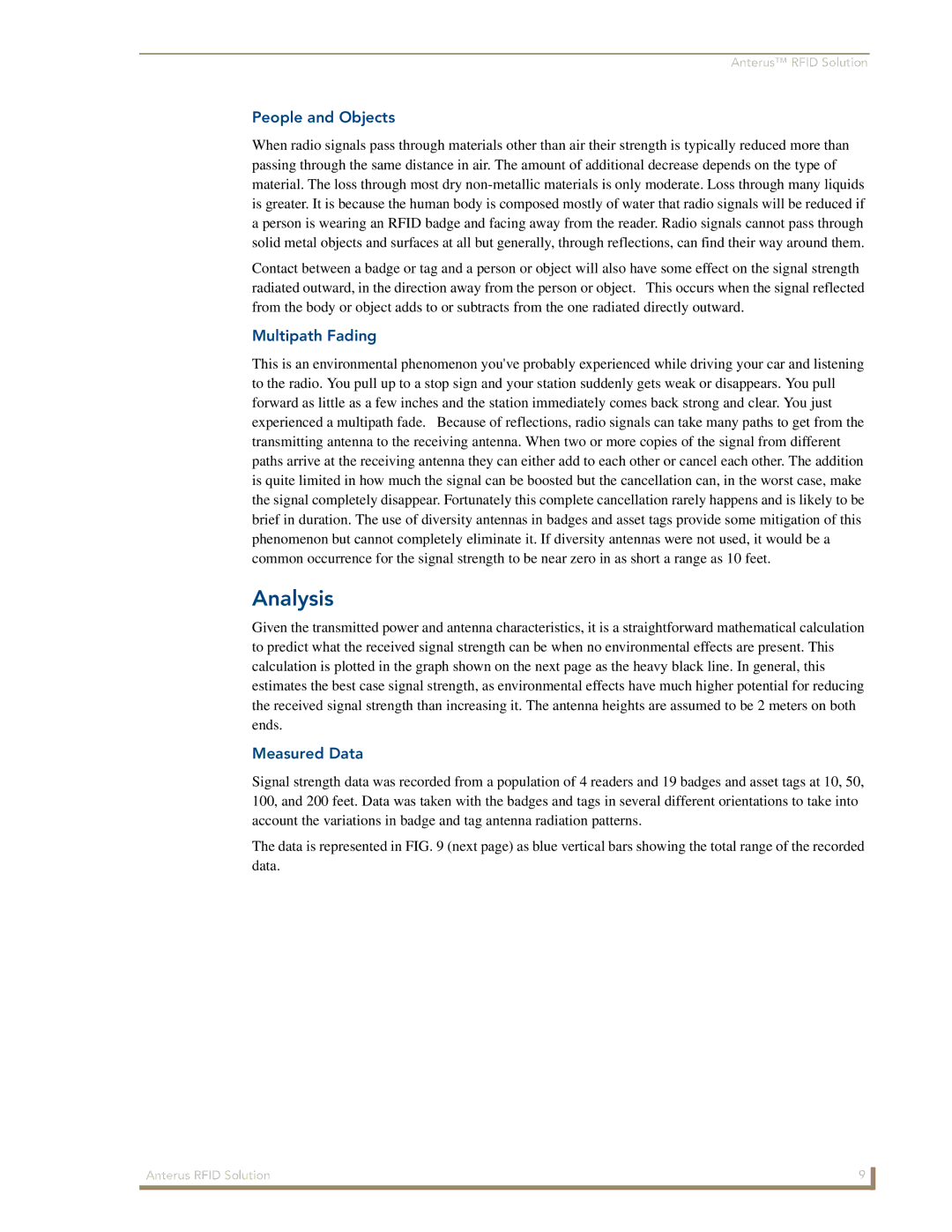Anterus™ RFID Solution
People and Objects
When radio signals pass through materials other than air their strength is typically reduced more than passing through the same distance in air. The amount of additional decrease depends on the type of material. The loss through most dry
Contact between a badge or tag and a person or object will also have some effect on the signal strength radiated outward, in the direction away from the person or object. This occurs when the signal reflected from the body or object adds to or subtracts from the one radiated directly outward.
Multipath Fading
This is an environmental phenomenon you've probably experienced while driving your car and listening to the radio. You pull up to a stop sign and your station suddenly gets weak or disappears. You pull forward as little as a few inches and the station immediately comes back strong and clear. You just experienced a multipath fade. Because of reflections, radio signals can take many paths to get from the transmitting antenna to the receiving antenna. When two or more copies of the signal from different paths arrive at the receiving antenna they can either add to each other or cancel each other. The addition is quite limited in how much the signal can be boosted but the cancellation can, in the worst case, make the signal completely disappear. Fortunately this complete cancellation rarely happens and is likely to be brief in duration. The use of diversity antennas in badges and asset tags provide some mitigation of this phenomenon but cannot completely eliminate it. If diversity antennas were not used, it would be a common occurrence for the signal strength to be near zero in as short a range as 10 feet.
Analysis
Given the transmitted power and antenna characteristics, it is a straightforward mathematical calculation to predict what the received signal strength can be when no environmental effects are present. This calculation is plotted in the graph shown on the next page as the heavy black line. In general, this estimates the best case signal strength, as environmental effects have much higher potential for reducing the received signal strength than increasing it. The antenna heights are assumed to be 2 meters on both ends.
Measured Data
Signal strength data was recorded from a population of 4 readers and 19 badges and asset tags at 10, 50, 100, and 200 feet. Data was taken with the badges and tags in several different orientations to take into account the variations in badge and tag antenna radiation patterns.
The data is represented in FIG. 9 (next page) as blue vertical bars showing the total range of the recorded data.
Anterus RFID Solution | 9 |
|
|
